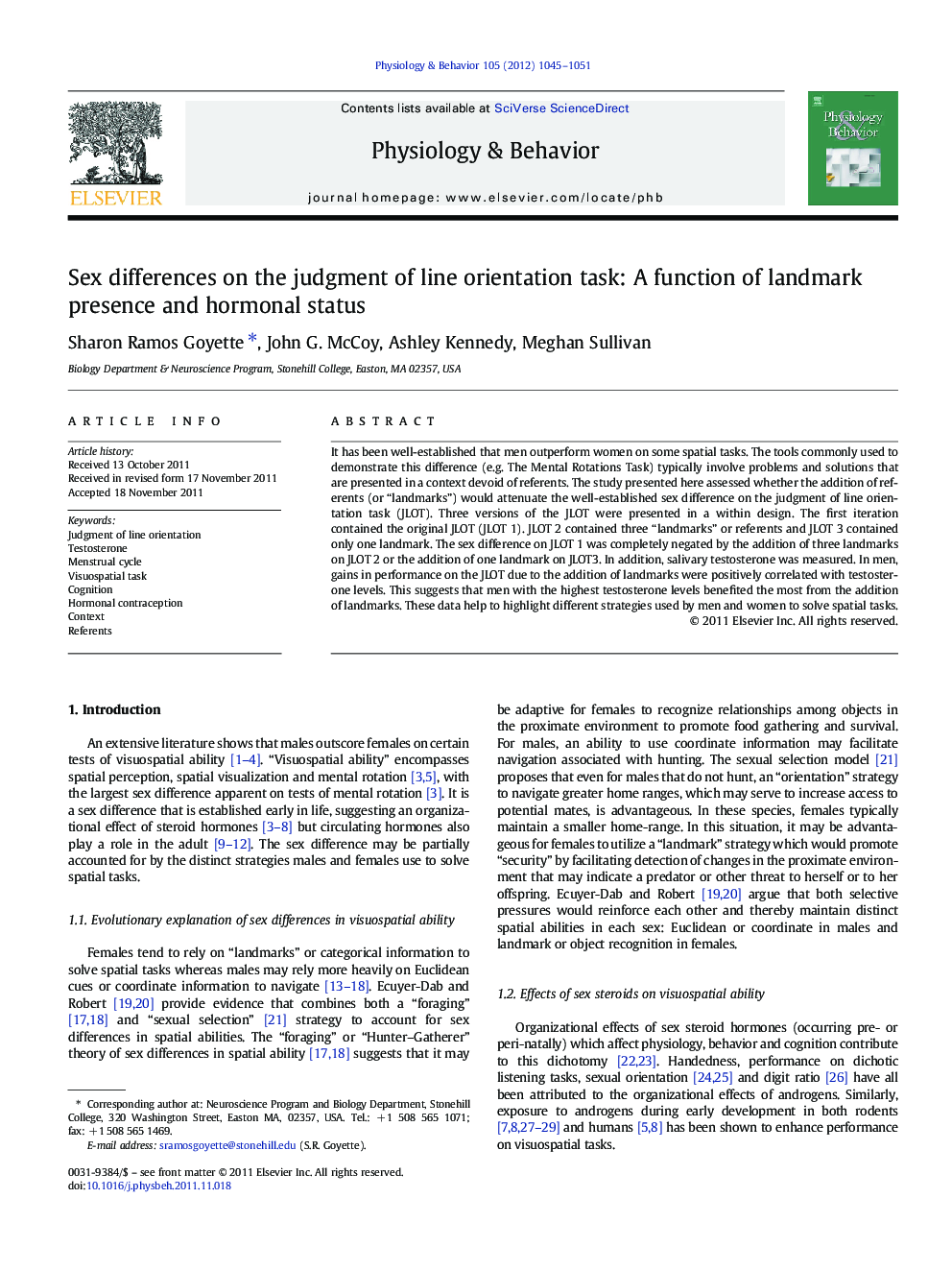| Article ID | Journal | Published Year | Pages | File Type |
|---|---|---|---|---|
| 5925368 | Physiology & Behavior | 2012 | 7 Pages |
It has been well-established that men outperform women on some spatial tasks. The tools commonly used to demonstrate this difference (e.g. The Mental Rotations Task) typically involve problems and solutions that are presented in a context devoid of referents. The study presented here assessed whether the addition of referents (or “landmarks”) would attenuate the well-established sex difference on the judgment of line orientation task (JLOT). Three versions of the JLOT were presented in a within design. The first iteration contained the original JLOT (JLOT 1). JLOT 2 contained three “landmarks” or referents and JLOT 3 contained only one landmark. The sex difference on JLOT 1 was completely negated by the addition of three landmarks on JLOT 2 or the addition of one landmark on JLOT3. In addition, salivary testosterone was measured. In men, gains in performance on the JLOT due to the addition of landmarks were positively correlated with testosterone levels. This suggests that men with the highest testosterone levels benefited the most from the addition of landmarks. These data help to highlight different strategies used by men and women to solve spatial tasks.
⺠A sex difference on the JLOT was confirmed. ⺠Landmarks negate the well-established sex difference on the JLOT. ⺠Men with the lowest testosterone levels did not rely on landmarks. ⺠Men with the highest testosterone levels benefited from landmarks. ⺠Women benefited from the addition of landmarks.
